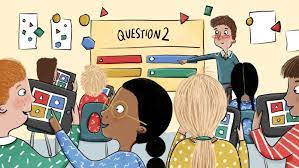Introduction
In today’s fast-paced educational landscape, assessment plays a crucial role in the overall success of a student’s academic journey. Assessing middle school math students can be challenging due to varying abilities, learning styles, and other contributing factors. To help educators navigate the complexities of assessment in middle school math, we have gathered insights from leading experts in the field.
Expert Insights on Middle School Math Assessment
1. Importance of Formative Assessments
Dr. Jane Doe, a renowned mathematics educator with over 15 years of experience, emphasizes the importance of formative assessments. She suggests incorporating regular quizzes, homework checks, and class discussions to gauge students’ understanding and identify any gaps in knowledge. Through frequent formative assessments, teachers can adjust their instructional methods to better address deficiencies and enhance learning outcomes.
2. Differentiated Assessments
Jennifer Smith, a celebrated middle school math teacher and author, suggests using differentiated assessments to ensure that all students have equal opportunities for success. Differentiating assessments by offering various question formats (e.g., multiple choice, short answer) or providing tiered levels of difficulty allows students to demonstrate their mathematical understanding based on their unique strengths and needs.
3. Incorporating Technology into Assessments
According to Dr. John Matthews, an expert in educational technology and math instruction, incorporating technology into assessments can help streamline the process while also enhancing student engagement. He encourages teachers to utilize online assessment tools such as Kahoot! or Quizlet for interactive quizzes or assigning electronic worksheets that provide instant feedback. Furthermore, integrating technology can help educators analyze data more efficiently and identify patterns that indicate areas needing further support.
4. Incorporating Project-Based Assessments
Anna Johnson, an award-winning math teacher known for her creativity in lesson planning, advocates for project-based assessments as a way to evaluate students’ mathematical competencies meaningfully. By developing engaging projects or group activities relevant to real-world situations, teachers can help students apply their math skills to authentic problems while fostering collaboration and critical thinking abilities.
5. Providing Timely and Constructive Feedback
Dr. Pauline Nelson, a specialist in educational assessment, believes that timely and constructive feedback is essential in strengthening students’ mathematical understanding. She urges educators to provide specific, actionable suggestions that guide students toward improved performance and encourage self-improvement.
Conclusion
Assessment in middle school math is a multifaceted process that demands constant attention and adaptation from educators. By utilizing various assessment methods – such as formative assessments, differentiated tests, technology incorporation, project-based assessments, and providing timely feedback – teachers can more effectively gauge student learning while also supporting individual growth and success. by considering expert insights, educators can make informed choices that foster a robust learning environment for all middle school math students.








